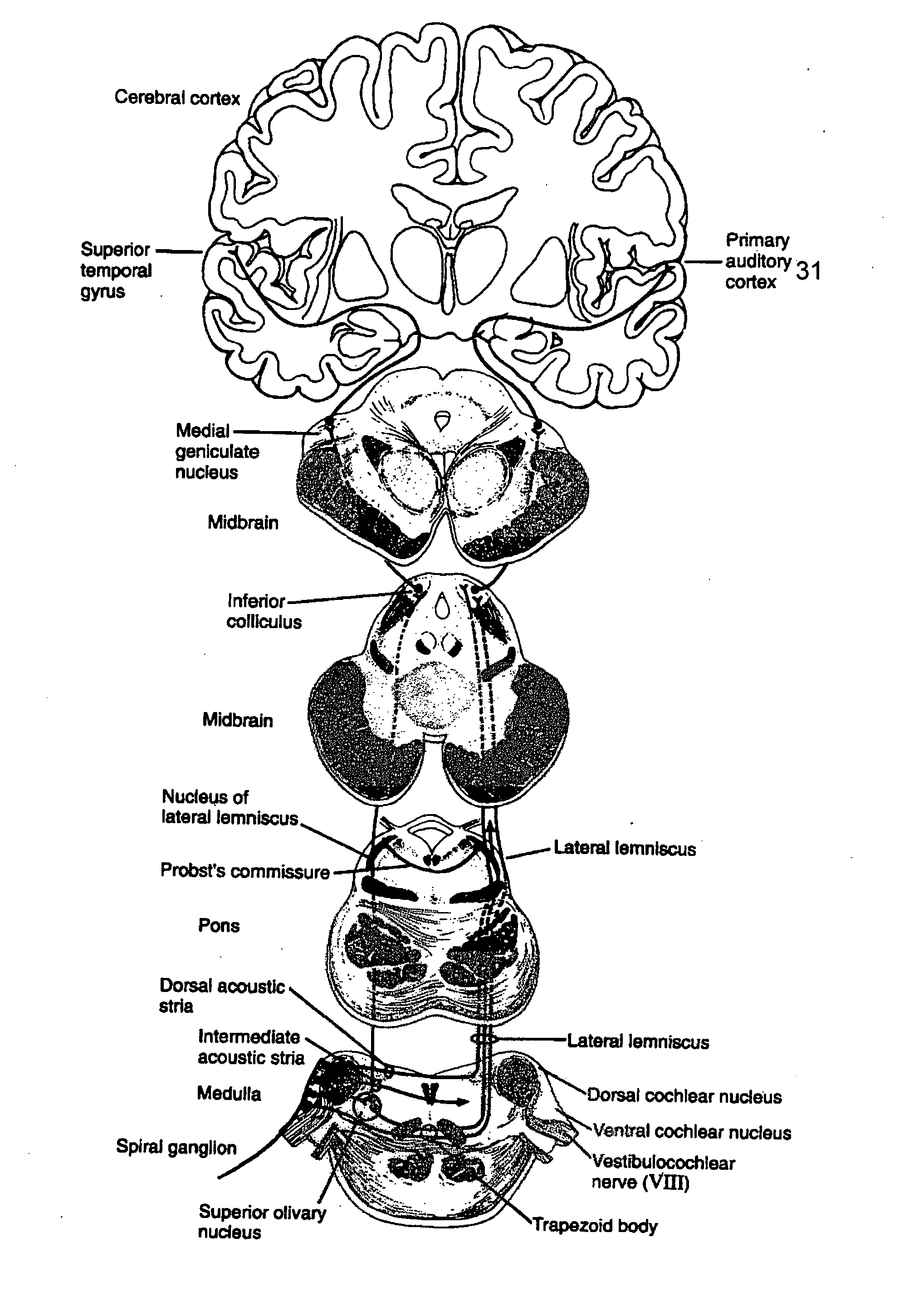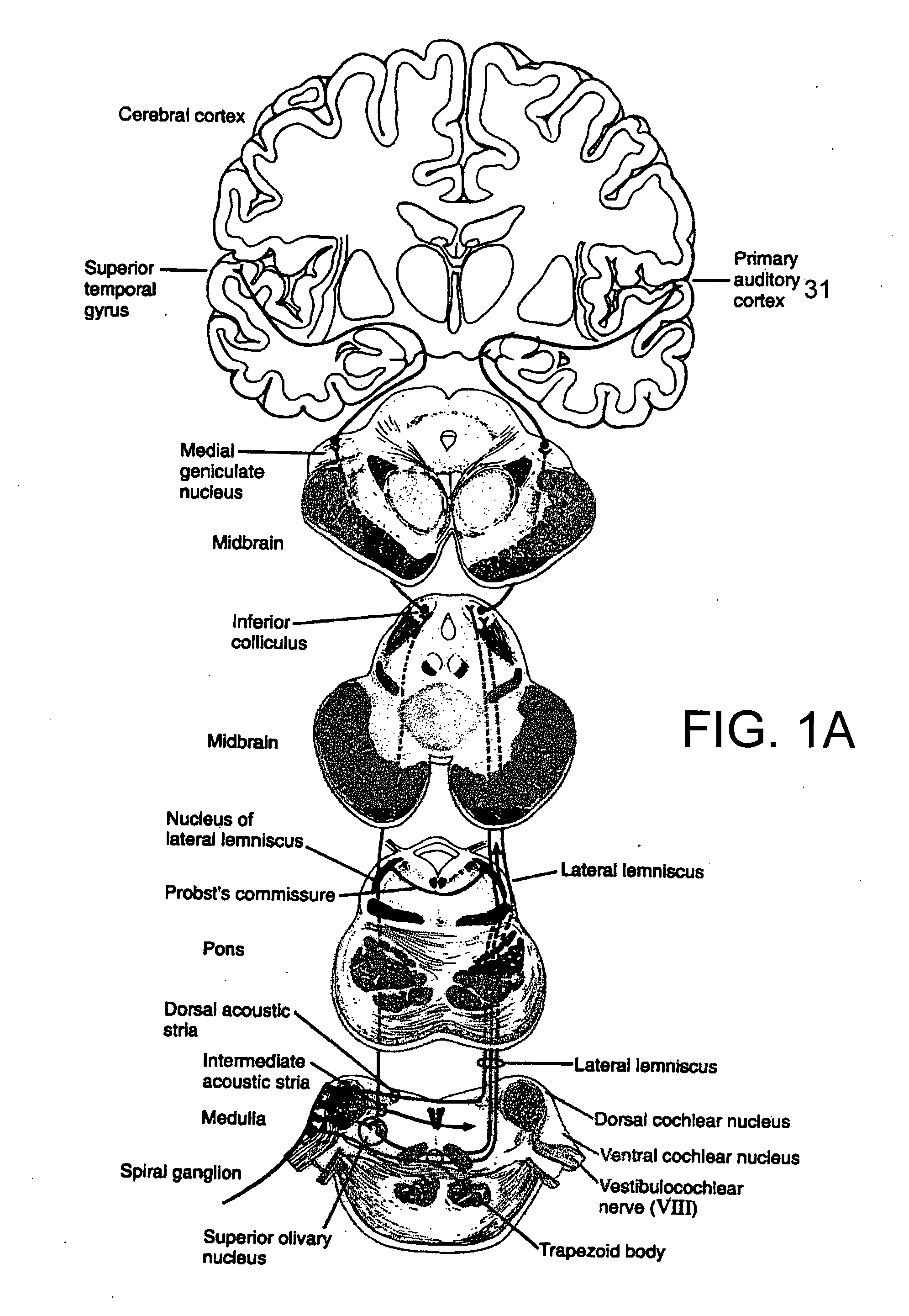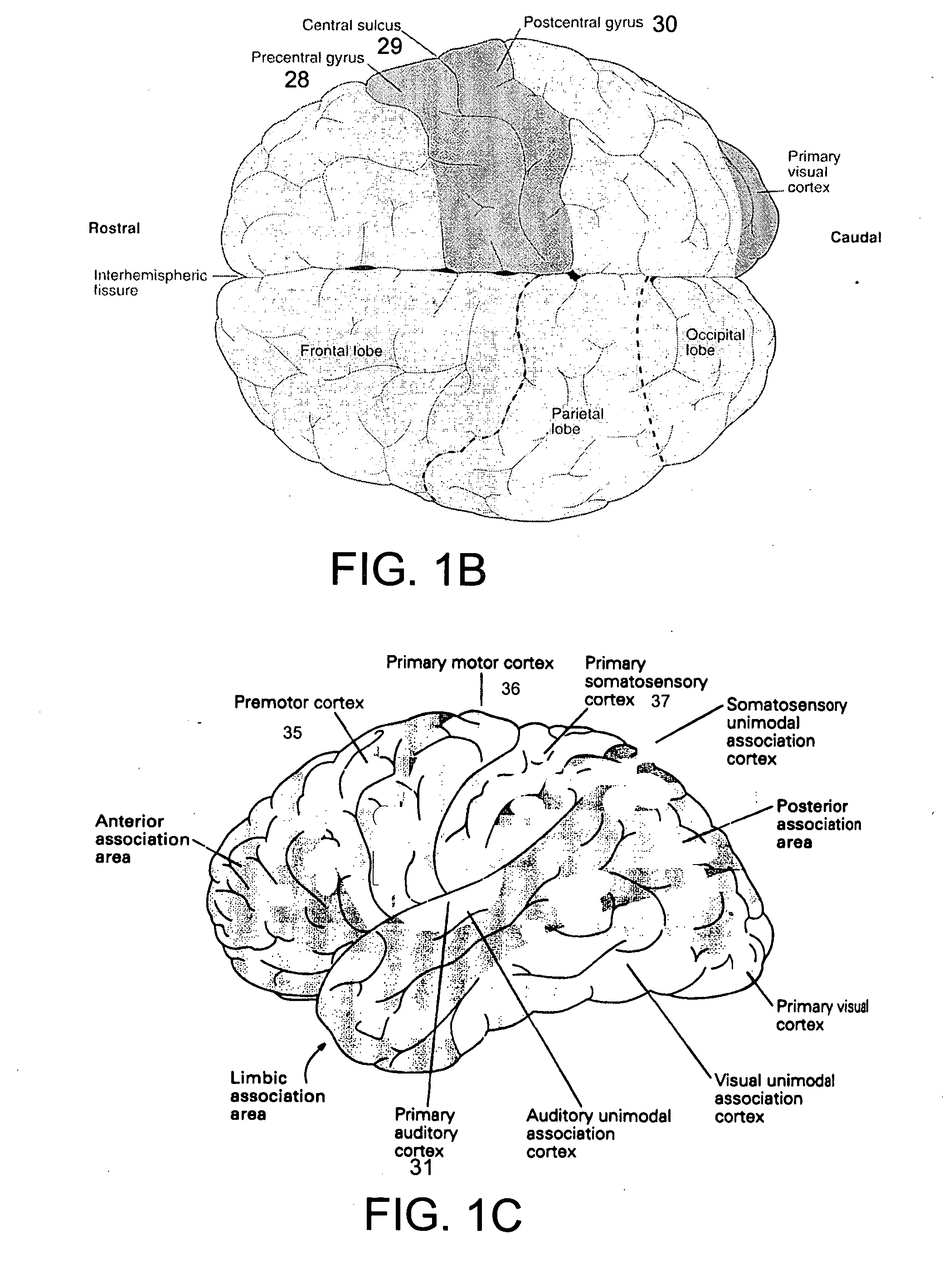Method and system for cortical stimulation to provide adjunct (ADD-ON) therapy for stroke, tinnitus and other medical disorders using implantable and external components
a cortical stimulation and adjunct therapy technology, applied in the field of brain stimulation, can solve the problems of devastating effects of stroke that are often permanent, and the part of the brain that cannot function as a controllable part of the body, and the brain does not get the blood flow it needs
- Summary
- Abstract
- Description
- Claims
- Application Information
AI Technical Summary
Benefits of technology
Problems solved by technology
Method used
Image
Examples
Embodiment Construction
[0228] The following description is of the best mode presently contemplated for carrying out the invention. This description is not to be taken in a limiting sense, but is made merely for the purpose of describing the general principles of the invention. The scope of the invention should be determined with reference to the claims.
[0229] In one aspect, electrical pulses are supplied to the cortical tissue 54 based at least in part to sensing intrinsic electrical activity from the neural cortical tissue 54. This is shown in conjunction with FIG. 18, where preferably paddle electrodes (grid electrodes may also be used) are placed in relation to an ischemic region 21, such as may be caused by stroke. The paddle (or grid) electrodes are placed such that one electrode pair is closest to the ischemic tissue and one electrode pair is farthest from the ischemic tissue, and closest to “healthy” neural tissue. Based on the underlying electrophysiologic principles, it would be expected that th...
PUM
 Login to View More
Login to View More Abstract
Description
Claims
Application Information
 Login to View More
Login to View More - R&D
- Intellectual Property
- Life Sciences
- Materials
- Tech Scout
- Unparalleled Data Quality
- Higher Quality Content
- 60% Fewer Hallucinations
Browse by: Latest US Patents, China's latest patents, Technical Efficacy Thesaurus, Application Domain, Technology Topic, Popular Technical Reports.
© 2025 PatSnap. All rights reserved.Legal|Privacy policy|Modern Slavery Act Transparency Statement|Sitemap|About US| Contact US: help@patsnap.com



